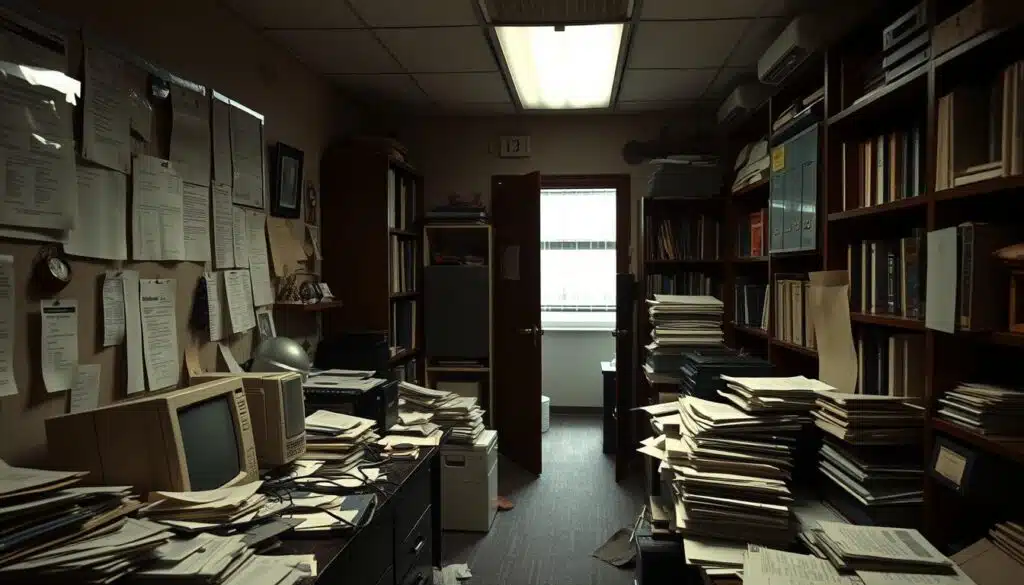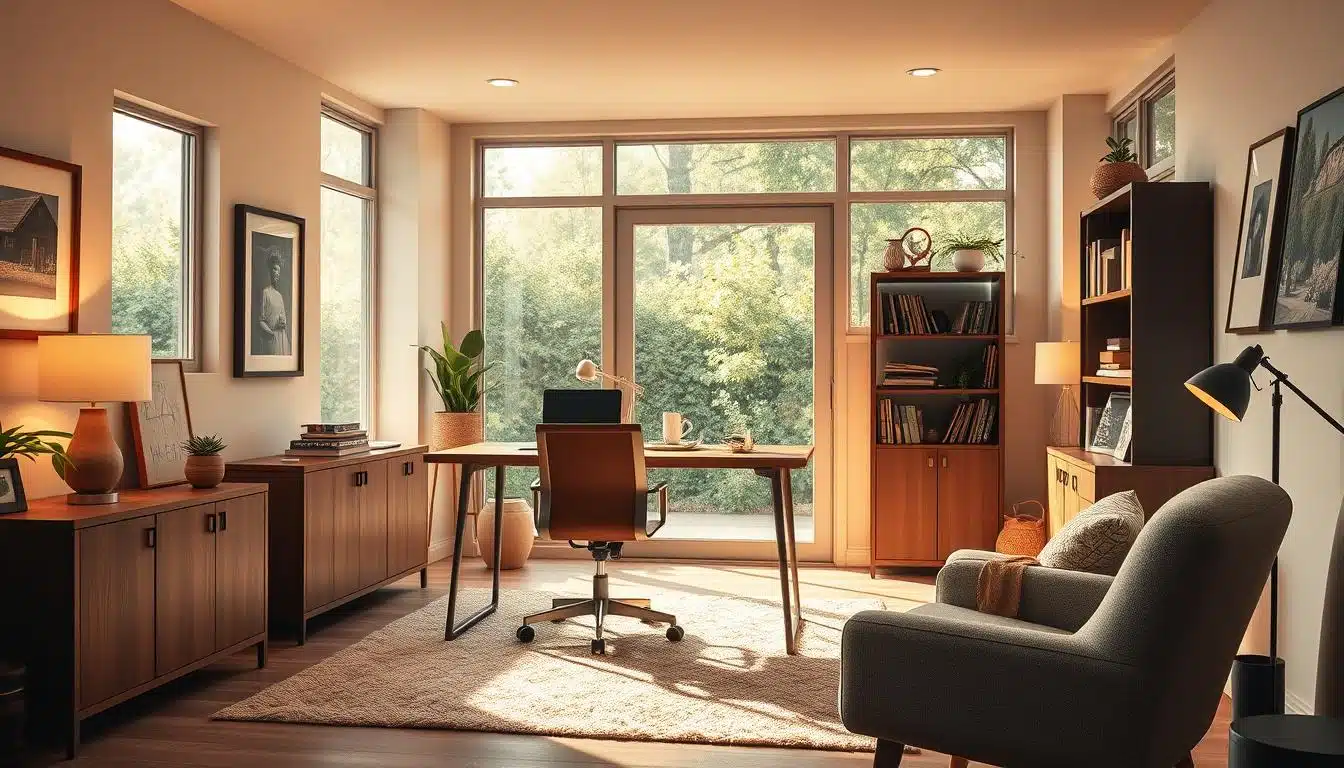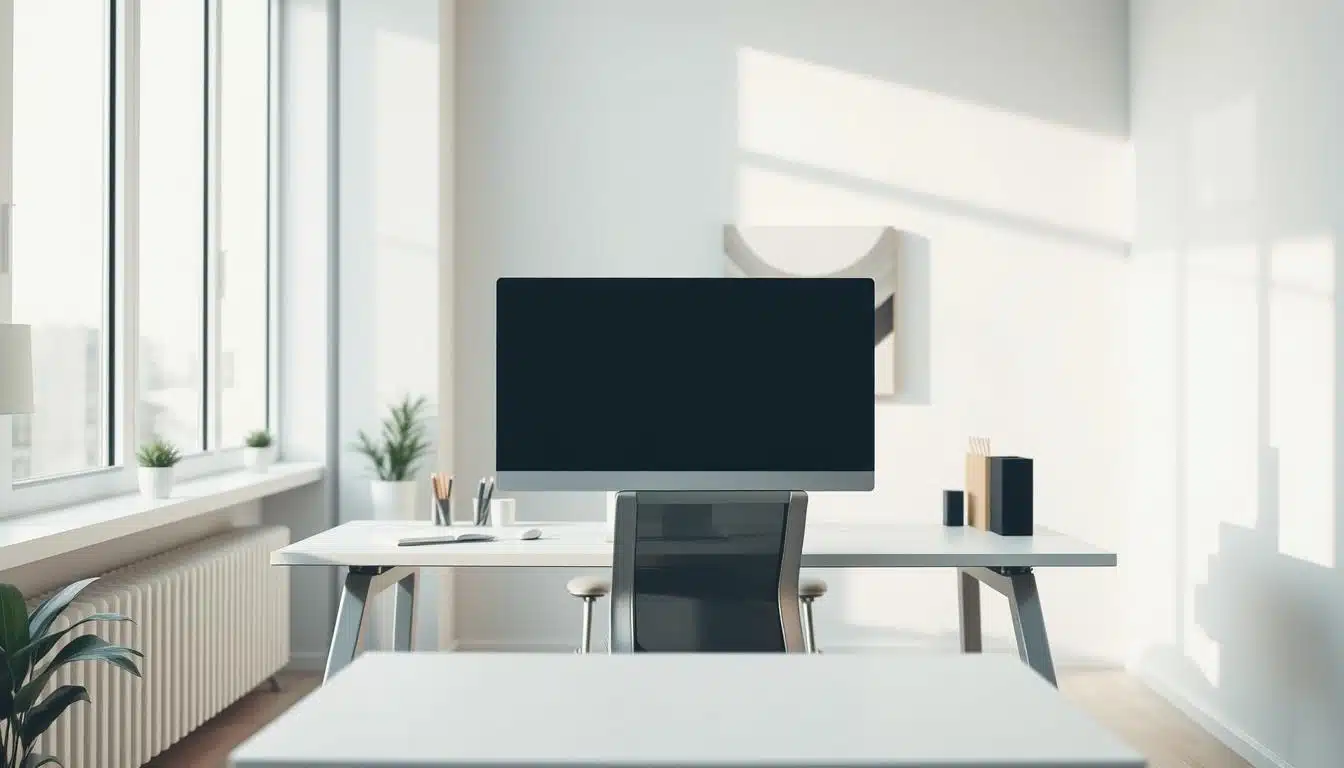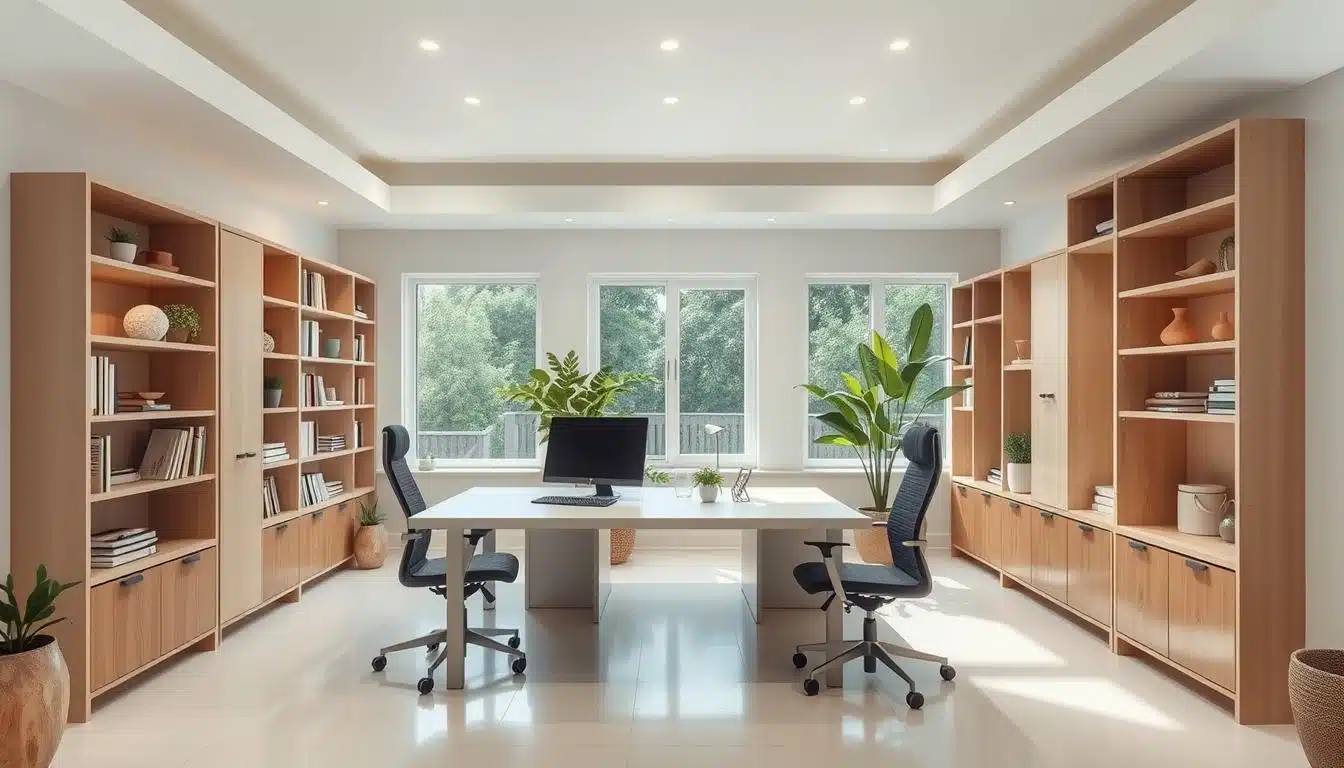In a fast-moving work world, boosting office productivity, especially in small spaces, is crucial. Tips for a more efficient workspace are vital to make employees perform better and feel happier. By managing the space well, businesses can really lift employee satisfaction and productivity.
This article talks about different ways to make a small office work better. It covers smart design, keeping things organized, and using tech wisely. These ideas aim to deal with the challenges of working in a small area. They’ll help you get the most out of your tiny office.
Understanding the Challenges of a Tiny Office
Working in a tiny office comes with unique issues, affecting both work and how people feel. Space management is a big concern. With not much room, it’s hard to work smoothly which makes office jobs tougher. Knowing these challenges in small offices helps make a better working place.
Moving around in a small office is important. But a crowded space can block paths, making it hard to get around and disturbing work. These productivity hurdles can make people more stressed and less effective at their jobs.
The way a tight office feels can also be a problem. Too much stuff can make everything feel chaotic, hurting how well people work and their happiness. Studies show a clean space can make a big difference in how much gets done. So, it’s key to plan well for using space wisely.

Efficient Office Layout for Enhanced Productivity
A smart office layout greatly boosts productivity in small spaces. It shapes how well employees perform and feel at work. By understanding what employees need and how they work together, businesses can craft spaces for solo and group work.
Open areas boost talking and new ideas, while quiet spots help with concentration. Smart furniture setup can make the most of every inch, without making things feel tight. Think about using desks that change for different jobs and organizing tools to keep everything tidy.
Finding the right mix helps everyone work together and stay focused. A well-thought-out office design does more than up productivity. It also makes employees happier and more effective on the job.
Incorporating Multi-Functional Furniture
In small office spaces, using space well is key to doing more work. Multi-functional furniture helps with this by being both useful and stylish, without sacrificing comfort. Items like L-shaped desks and Murphy beds make a small area work better for you.
Having furniture that can change helps workers make their space their own, even in tight places. Things like rolling desks change for different jobs and heights, making sure you’re comfortable all day. Also, pegboard wall shelves keep things tidy and add a creative touch for organizing office items.
Adding these features helps companies make the most out of small spaces. The right furniture is not just practical but also makes the office more welcoming. This environment boosts teamwork and creativity.
Implementing Smart Office Technology
Smart office tech boosts efficiency in small offices. It uses tools like cloud storage to cut down clutter and let teams access info from anywhere. This helps in keeping office space neat and making sure important data is always reachable.
Digital platforms make talking and working together easier. They are key for small office setups. By making communication smooth, these platforms help teams work better together.
Workplace automation changes the game. It lets employees use voice assistants for reminders and managing tasks. This helps them focus on more important work, not just the same tasks over and over. It makes the workflow better and the office more agile.
Investing in tech that supports working from anywhere keeps teams productive, no matter where they are. If used wisely, this tech makes the workspace flexible and efficient. It helps everyone stay on top of their work, even from a distance.
Office Productivity for Tiny Offices
In small offices, being organized is key to high productivity. Making sure the workspace is organized helps with work efficiency and clears the mind. A neat space boosts creativity and concentration, while a messy one can cause distractions and lower work quality.
Creating an Organized Workspace
To create an effective organized workspace, try these methods:
- Utilize vertical space with shelves to store rarely used items.
- Employ storage bins and labeled files for easy retrieval.
- Opt for clear desk organizers to maintain visibility of essential items.
- Establish a dedicated zone for each team member, promoting personal ownership.
Establishing Clear Workflows
Setting up clear workflows is essential in small offices. Clear workflows help staff know what to do each day without getting mixed up. Important steps include:
- Labeling all storage areas so employees can locate items quickly.
- Creating visual workflow charts to illustrate processes.
- Utilizing task management software to keep projects on track.
- Encouraging regular check-ins to address any workflow hurdles.
Utilizing Natural Light and Comfort
Using natural light in office design can make workspaces more comfortable. Sunlight not only makes places brighter but also improves the mood at work. Research shows that having enough natural light boosts mood and focus, making it essential for good work lighting.
To make the most of natural light, put desks near windows. This lets employees enjoy sunlight all day. Sheer curtains can reduce harsh sunlight while keeping the office bright. Adding plants can also help with air flow and bring nature indoors, making the workplace nicer.
Making a welcoming space with these ideas can lead to happier and more productive employees. When office designs focus on natural light and comfort, they help workers stay motivated and effective.
The Importance of Decluttering
Keeping your office organized can greatly improve your productivity and happiness. Using good decluttering tricks can change a messy space into a neat one. A tidy workplace helps you focus and feel less stressed, which is key for doing your best work. It’s important to keep things orderly for success in the long run.
Strategies for Regular Cleaning
It’s important to clean regularly to keep things neat. Here are some top cleaning tips:
- One-in/One-out Policy: Whenever you bring something new to the office, take one old item out to avoid clutter.
- Systematic Cleaning Schedules: Make a habit of cleaning different parts of the office regularly, so every area stays tidy.
- Document Management: Keep paperwork under control by sorting, filing, and digitally saving documents regularly.
The benefits of a clean workspace aren’t just about looking good. Being clutter-free helps you think more clearly and work better. By following these cleaning tips and keeping your office organized, you can make your workspace more efficient and a nicer place to be.
Employee Involvement in Workspace Design
Getting employees involved in designing their workspace boosts productivity and morale. By talking to staff about their space, we can learn what they need and like. This way, we create a workspace that’s both functional and welcoming.
Teams that help design their space feel they own it. This builds a positive office culture. Workers can share what they think about the lighting, layout, and furniture. Their ideas bring innovation and help us use space better.
There are real stories of how staff ideas have changed offices for the better. When companies listen to their employees, they create workspaces that are both useful and comfortable. Letting employees share their thoughts leads to creative and efficient solutions.
Letting employees help design their workspace makes an office better. This leads to happier workers and more productivity. Both are key for a successful company.
Conclusion
Making the most of a small office comes down to good planning and keeping things tidy. The key to office efficiency lies in choosing smart layouts, furniture that does more than one thing, and modern technology. This way, even small spaces can become productivity hubs. By staying organized and setting up clear work processes, businesses can beat the small space challenge.
We urge our readers to try out the tiny office ideas we’ve talked about. A tidy, well-thought-out office doesn’t just make work easier. It also helps build a business where ideas flow and people work together well. Following these office design tips can really boost how well and happily people work.
Lastly, think of a great workspace as an investment in how well your team works and feels. By applying our advice, you can craft a space that really supports productivity. This sets the stage for success now and in the future.



